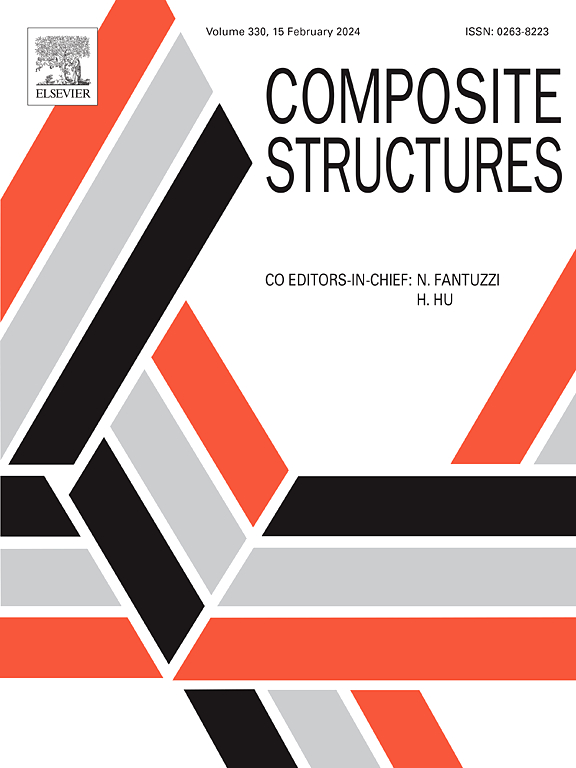柔性纤维增强水泥浆的流变学:最大填料分数测定和结构堆积分析
IF 6.3
2区 材料科学
Q1 MATERIALS SCIENCE, COMPOSITES
引用次数: 0
摘要
柔性纤维的最大堆积分数(φfm)是了解柔性纤维增强水泥浆(FFRCP)流变行为的一个重要参数。然而,目前仍缺乏对柔性纤维φfm 的直接测量。本研究提出了一种直接测量 φfm 的基于剪切流变学的方法,并通过显微 CT 验证了剪切作用下纤维构象的假设。在此基础上,构建了 FFRCP 的屈服应力模型,以解释纤维网络中的缠结和摩擦效应。最后,进行了静态屈服应力试验和小振幅振荡剪切(SAOS)试验,以探索 FFRCP 的结构构建。研究发现,对于给定的 FFRCP,所提出的方法只需几个粘度-纤维含量数据就能直接确定φfm。此外,提出的模型能很好地描述 FFRCP 的静屈服应力。最后,以临界相对纤维体积分数(0.299)为边界,FFRCP 的相对结构增大率与相对屈服应力的变化趋势相似。随后,由于纤维的限制作用,相对结构增大逐渐偏离相对屈服应力。本文章由计算机程序翻译,如有差异,请以英文原文为准。
Rheology of flexible fiber-reinforced cement pastes: Maximum packing fraction determination and structural build-up analysis
The maximum packing fraction () of flexible fibers is an essential parameter for understanding the rheological behavior of flexible fiber-reinforced cement paste (FFRCP). However, direct measurement of of flexible fibers is still lacking. In this study, a shear rheology-based method for direct measurement of was proposed and the assumption of fiber conformation under shear was verified by micro-CT. Based on this, a yield stress model for FFRCP was constructed to explain the entanglement and friction effects in the fiber network. Finally, static yield stress tests and small amplitude oscillatory shear (SAOS) tests were carried out to explore the structural build-up of FFRCP. It was found that the proposed method enables direct determination of through only a few viscosity-fiber content data for a given FFRCP. Furthermore, the proposed model can describe the static yield stress of FFRCP well. Finally, the relative structural build-up rate of FFRCP follows a similar trend as the relative yield stress, with a critical relative fiber volume fraction (0.299) as the boundary. Subsequently, the relative structural build-up gradually deviates from the relative yield stress due to the limiting effect of the fibers.
求助全文
通过发布文献求助,成功后即可免费获取论文全文。
去求助
来源期刊

Composite Structures
工程技术-材料科学:复合
CiteScore
12.00
自引率
12.70%
发文量
1246
审稿时长
78 days
期刊介绍:
The past few decades have seen outstanding advances in the use of composite materials in structural applications. There can be little doubt that, within engineering circles, composites have revolutionised traditional design concepts and made possible an unparalleled range of new and exciting possibilities as viable materials for construction. Composite Structures, an International Journal, disseminates knowledge between users, manufacturers, designers and researchers involved in structures or structural components manufactured using composite materials.
The journal publishes papers which contribute to knowledge in the use of composite materials in engineering structures. Papers deal with design, research and development studies, experimental investigations, theoretical analysis and fabrication techniques relevant to the application of composites in load-bearing components for assemblies, ranging from individual components such as plates and shells to complete composite structures.
 求助内容:
求助内容: 应助结果提醒方式:
应助结果提醒方式:


